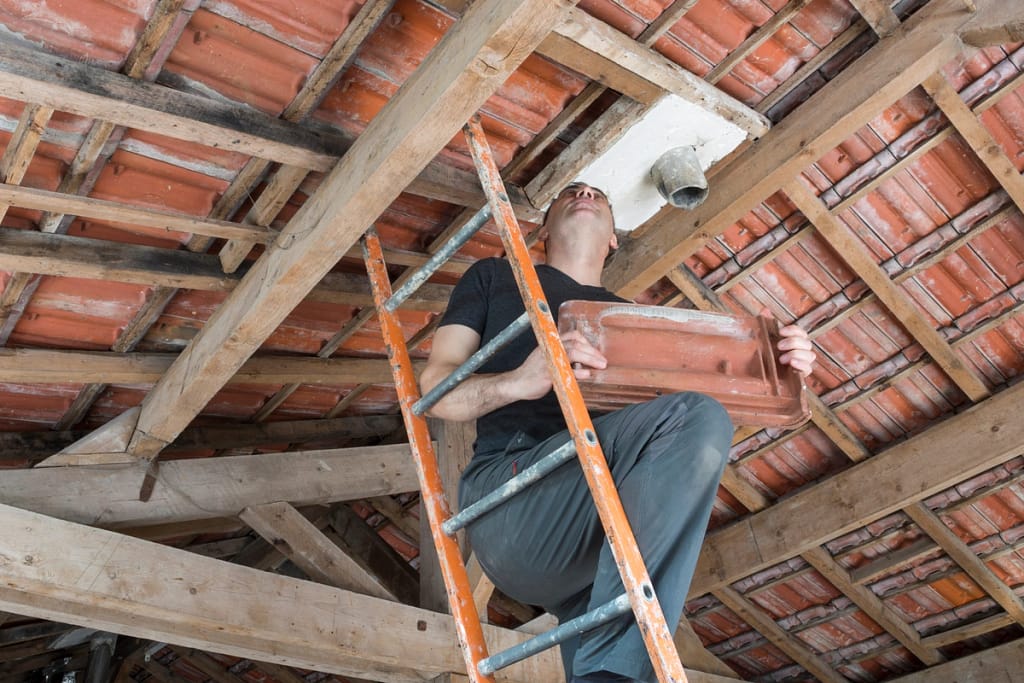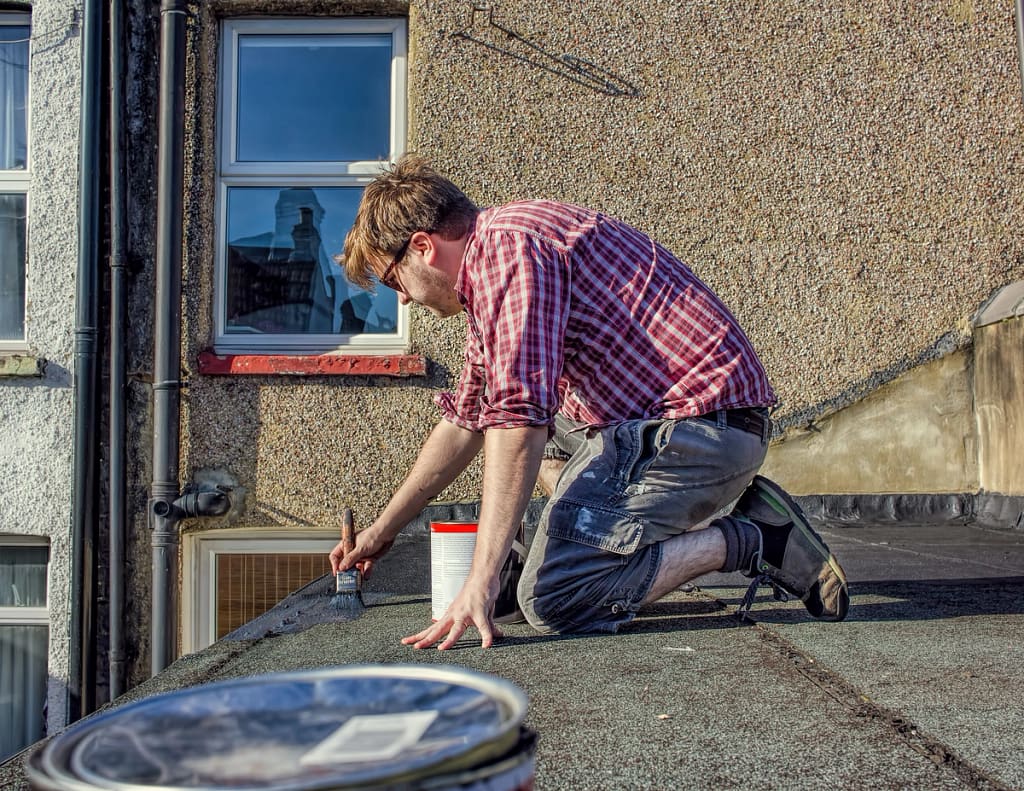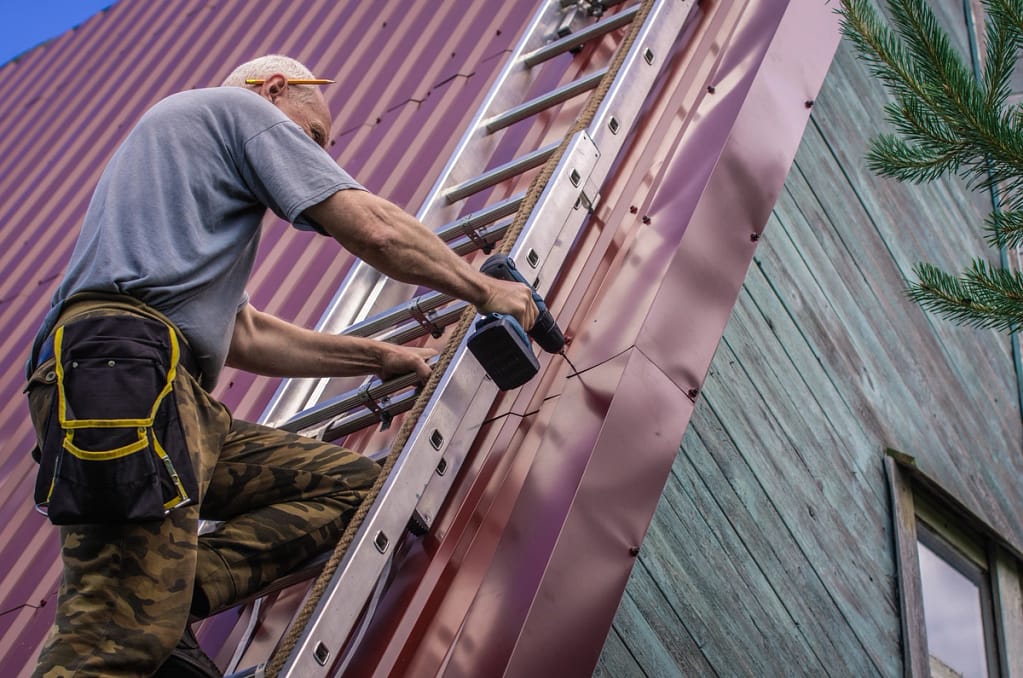Having a stable roof over your head is a big deal. As a homeowner, you need to maintain your roof as it ages and after severe storms pass through to ensure that minor issues don’t become major ones.
In addition to keeping an eye on things, knowing how to make quick repairs and what to do in emergency situations is also important. In this article, we’ll give you seven top emergency roof repair tips to keep handy.
Getting to Know Signs of Roof Damage

Roof damage can occur over time due to aging or happen suddenly due to high winds or a bad storm. If left neglected, roof damage can lead to structural damage to your home — which means more costly repairs for you. (Not to mention, it’s dangerous).
Before we dive into the emergency roof repair tips, it’s essential to know what roof damage looks like. That way, you know which tips will apply to your situation.
These are the signs to pay attention to:
- Water stains on the ceiling and walls. Water stains are one of the telltale signs of roof damage. They can appear on the ceiling and walls (closest to your attic or access space) and be yellow or brown in color. Freshwater spots will have no color, and they can indicate either moisture buildup or an actual leak.
- Missing, broken, or loose shingles. Shingles that are out of place are another obvious sign of roof damage. Shingle damage typically occurs after a major storm or as your roof weakens and gets hit with harsh winds. They can also lead to water leaks.
- Missing shingle granules. Asphalt shingles come with a layer of granules on the surface. By design, these granules act as your roofing material’s first line of defense against weather and debris. When your asphalt shingles are pelted by hailstones and other debris, the granules will eventually fall off, leaving bald spots and discoloration behind.
- Light coming through your attic. Whether your attic is unfinished or not, you may start to notice light shining through the roof boards. This is a clear sign of severe roof damage that requires immediate attention.
- Higher-than-usual energy bills. Your roofing system needs to be completely sealed and properly ventilated in order to keep your home’s energy running efficiently. If you notice an abnormal spike in your energy bill within a month’s time, it could be roof damage forcing your HVAC system to work overtime.
7 Emergency Roof Repair Tips to Keep in Mind
When you’re dealing with an emergency roof repair situation, the two most important things you need to do are:
- Prevent further damage from occurring
- Have the damage fixed immediately
These are the tips to do just that:
1. Inspect the Damage 👀

After a bad storm passes or you notice that something with your roof is off, the first thing you need to do is take a look.
Starting from the inside of your home, inspect your attic or access space and the ceilings of the floor closest to the attic or access space. Then, do an external walk-through of your property, inspecting your roof from the ground up for dents, cracks, missing shingles, debris, and so on.
It’s not recommended to climb up to your roof and walk around alone. However, if you choose to do so, be sure to use the buddy system and observe the damage from the lengths of your ladder — don’t actually climb onto the roof!
2. Document EVERYTHING 📸
As you inspect your roof and property, be sure to take photos of everything — even if it’s your siding, windows, and other items on your property. Take detailed notes to go along with your photos, as they can come in handy if you need to file an insurance claim.
3. Tarp Large Areas of Damage 🏠
If there are large areas of damage, including holes or areas with a lot of missing shingles, you’ll want to apply a tarp immediately. You can find tarps at any local hardware store, and they come in all different sizes.
Be sure to find a tarp that will extend at least three feet past the damaged area and that it has an adhesive so you can avoid having to use nails or other fasteners. If this is something you’ve never done before (as most homeowners have not), it’s strongly recommended that you call a local roofer that can provide emergency services to tarp or patch your roof instead.
4. Carry Out Any Minor Repairs 🔨

If you are able and can safely do so, you’ll want to get a head start on mending any minor damages such as cracks, small holes, or missing shingles. This is the best way to mitigate any further damage while you wait for your roofing contractor to perform an inspection.
However, if the damages are caused by a recent storm, it’s best to leave things alone until you’ve successfully filed an insurance claim. Tampering with any damages can cause the insurance adjuster to deny your claim.
5. File an Insurance Claim 📋
If there’s significant damage after a storm or random accident, you’ll need to file a claim with your homeowner’s insurance company. Remember, this involves a thorough inspection and plenty of documentation to ensure that your claim is approved, so you’ll want to have a reliable roofing contractor perform an initial inspection and provide you with a detailed report.
It’s also a good idea to have your roofer be present when the insurance adjuster comes to ensure no mistakes are made.
6. Hire a Trustworthy Roofer 👷
While most of these tips go hand-in-hand, the single most important thing you can do when there’s roof damage is find an experienced and trustworthy roofing contractor. They’ll be able to provide you with a thorough inspection, accurate estimate, and they’ll likely be able to support you through the insurance claims process, as it can be a bit of a pain.
Moreover, make sure your roofer also offers workmanship warranties on repairs and roof replacements to guarantee the work so you can have peace of mind.
7. Schedule Your Repairs Right Away 📲

Once you’ve found a contractor you can trust, you’ll want to schedule your emergency roof repair or replacement right away. Keep in mind that not all roofers offer 24/7 emergency repair services, so if that’s the case, make sure they’re able to schedule the repairs as soon as possible.
Your Roof Repair Partner
The team at Best Exteriors is skilled and experienced when it comes to storm damage and emergency roof repairs. Get in touch with us today for a quick and free inspection. We also offer claim support and guidance so you don’t have to go through the insurance process alone.




